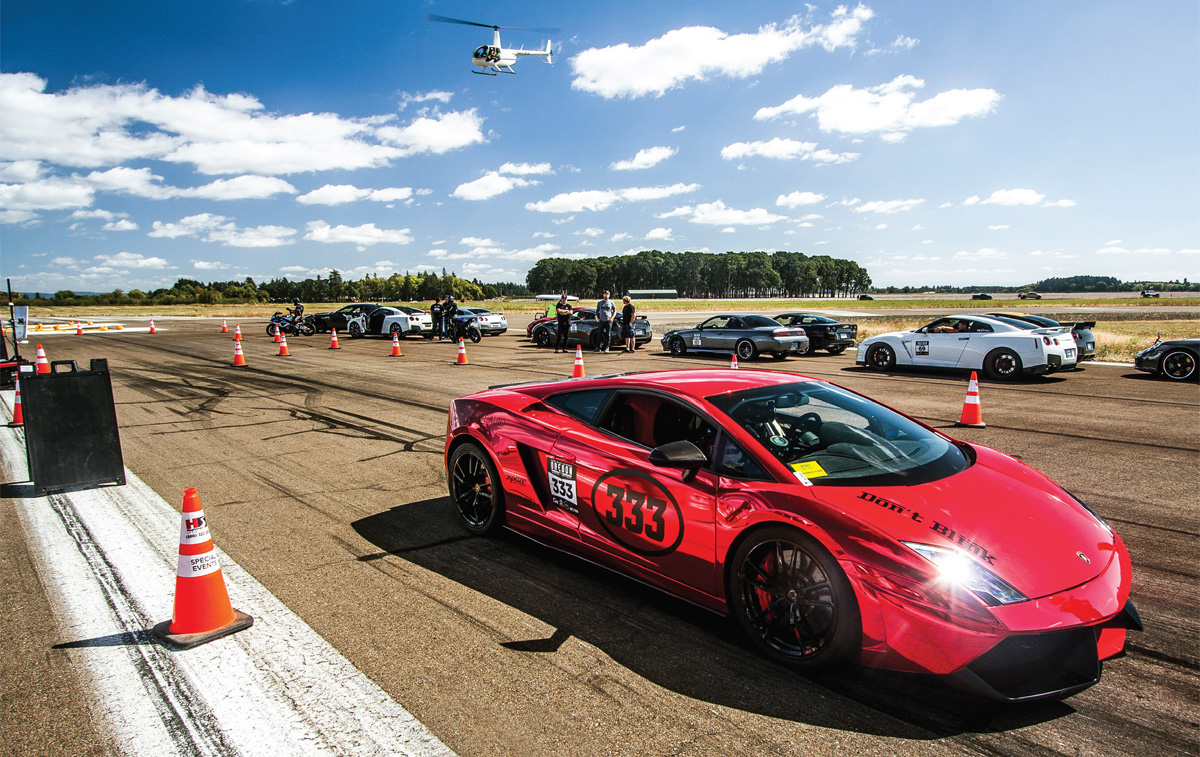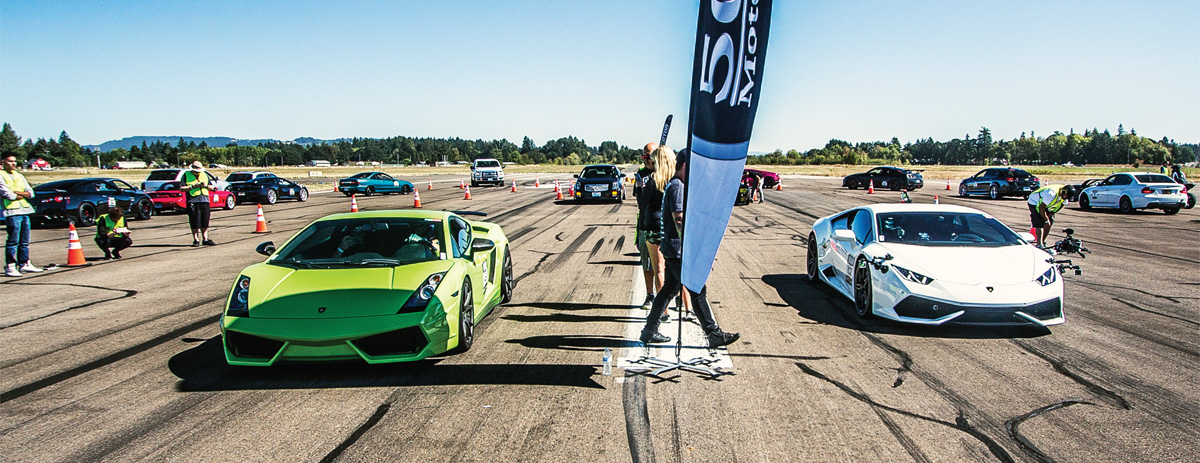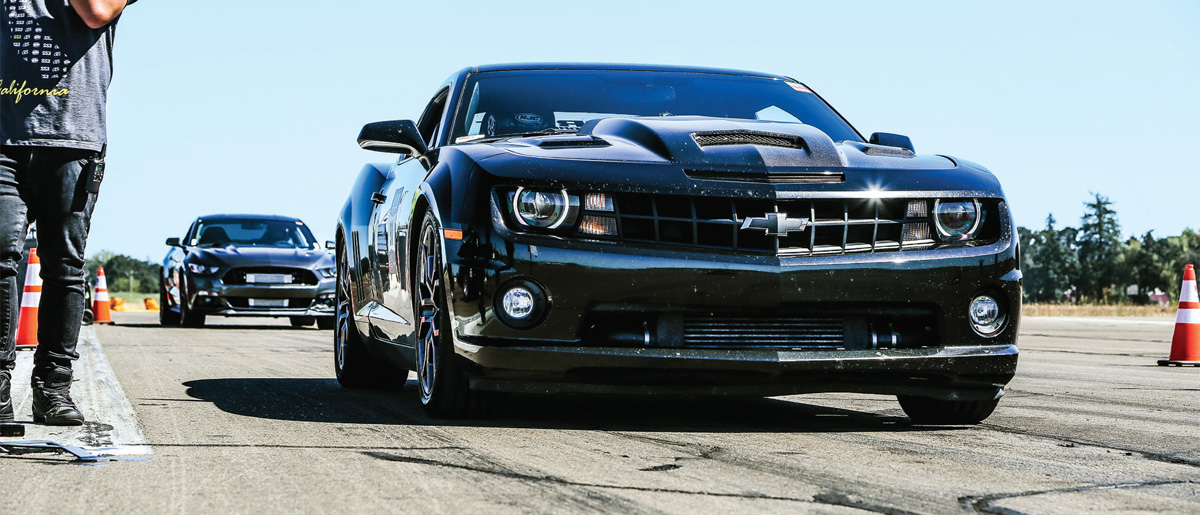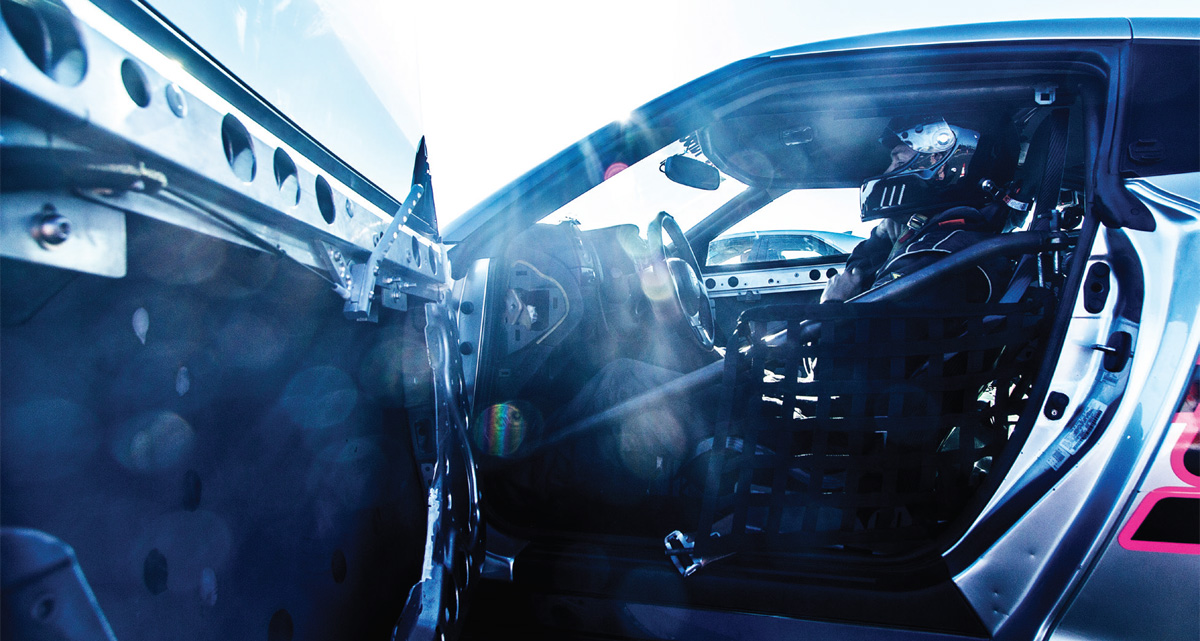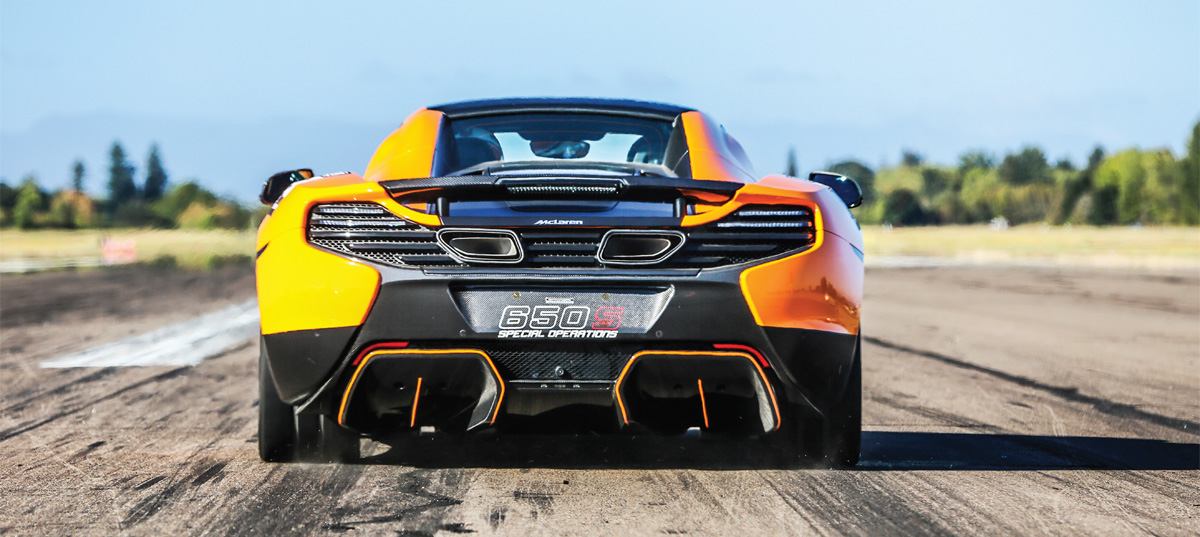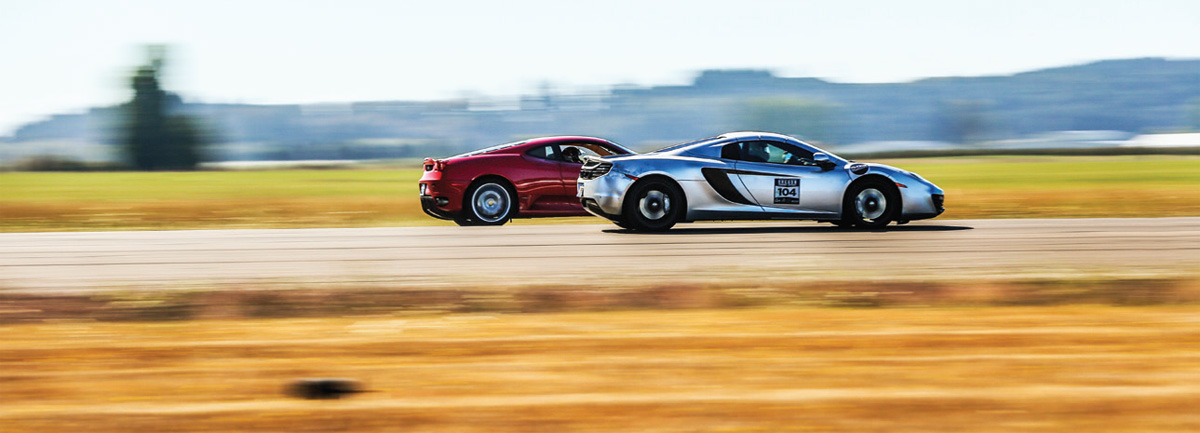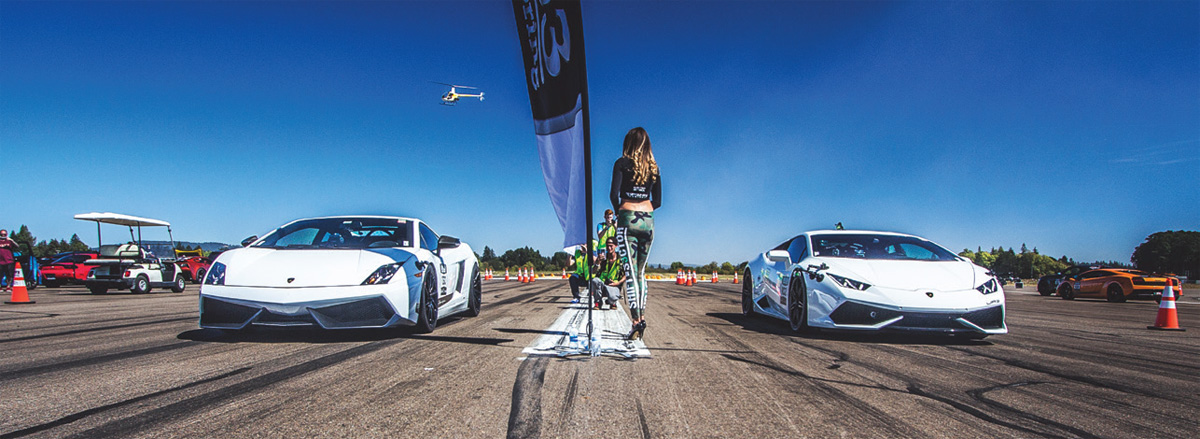FEATURED WINTER 2017 ISSUE
Shift Sector
Whether it is an American muscle car or a foreign exotic, racers choose ethanol over all other fuels.
This isn’t your daddy’s speed circus, kids – as in 84-year-old “Big Daddy” Don Garlits, considered to be the father of drag racing and who used nitromethane (a fuel that combines propane and nitric acid) to first surpass 170 miles per hour in a funny car.
Oh, no kids, far from it. This is Shift S3ctor, which began in 2011 as the first-of-its kind organization to bring side-by-side roll racing events to the West Coast.
Born out of the outlaw need for speed, mainly not-so-legal street drag racing – Shift S3ctor created its “Airship Attack,” a series of half-mile drag racing events utilizing airport runways that is an invitation for anyone to test their mettle (and metal) against the fastest machines in the world. Side-by-side.
Whether it be a big American Chevy Camaro muscle car, or a foreign exotic – like an Italian-made Lamborghini – these folks are pushing the envelope of speed.
And fueling all this ruckus is clean-burning, American-made ethanol.
What’s that, you say? Ethanol – like the E85 they sell at the gas station?
Exactly.
“I’d been running ethanol in my own (drag racing) car even before I heard of Ignite or Growth Energy or any of those guys,” said Shift S3ctor co-owner Jason Huang. “Me and a bunch of other guys started running ethanol, E85 basically, as a racing fuel to get the higher octane content. I started experimenting with it and had great results with it.”
Huang said a chance encounter with Jay Berry and Ignite Racing Fuels actually cemented his belief in ethanol as a race fuel, and as a fuel for the general public.
“We actually started working together to co-promote some events, he was generous enough to give us some sponsorship money, and we started to get the word out there,” Huang said. “And we’ve seen a huge turnaround in the amount of cars using ethanol.”
American Ethanol Racing is a collaborative partnership, which highlights the reliability, affordability and the performance capabilities with ethanol. Since 2011, American Ethanol has created partnerships with NASCAR and Ignite Racing Fuel to further ethanol’s reach into the sport. That, in turn, has helped owners and drivers in other racing disciplines – like boating, drifting and yes, drag racing – really see what ethanol can do for performance.
“What we’re seeing is ethanol being used in a much wider variety of cars and a much higher percentage of cars are using ethanol previous to using other racing fuels,” Huang said. “People tend to stick to what they know until they educate themselves. The biggest thing about ethanol that I find is education. There’s a lot of myths out there about ethanol that need to be broken – and we need to get the word out about the benefits of ethanol that people just really don’t understand yet. It’s not just gaining horsepower, or the engine cooling effects. Our approach for marketing American Ethanol is really to educate – to get paperwork out there at the event, get links up on the boards to the websites. But more to get it into some world-record cars and a lot of competitive cars so people say, ‘Wait, that guy just went a lot faster than me, what’s the difference?’”
“That difference is ethanol,” he added.
Word of mouth is growing. When Growth Energy launched its partnership with NASCAR in 2011, research into its fan base revealed that about 50 percent of NASCAR fans were supportive of ethanol in their vehicles, according to Kelly Manning, Vice President of Development for Growth Energy. Today, the same research indicates that number has grown to 80 percent acceptance.
“This has been an awesome partnership for us,” Manning said of American Ethanol’s partnership with Shift S3ctor. “This really validates the performance and quality of ethanol, where the regular consumer, or even race fans, would look at someone who works at POET or someone in the (ethanol) industry and think, ‘Well, you’re just saying that. You’re not the one building the engine, or the car.’ And that’s the beauty of this sport, and some of the other different areas of racing. The owners, the drivers, they love it. It runs cooler and the positives just go on and on.”
Shift S3ctor’s other co-founder, Ryan Fisher, and Shift S3tor event coordinator, Chris Bennett, echo Manning’s assessment that ethanol is making a huge impact in drag racing. And they’re seeing the fans’ support of the fuel, by seeing what ethanol brings to racing engines, and are willing to try it in their own vehicles.
“So ethanol has really jumped into the scene in the last couple of years,” Fisher said.
“There used to be more of a perception on turbo cars and ethanol, and now there’s these big-horsepower, domestic Corvettes and Mustangs that are running ethanol and it’s really opening up the eyes of a lot of people. So you can see it just tackling obstacles, kind of moving walls down and opening up for more people to see the gains and the greatness of it.”
“The top performers are using it and the little guy can go buy into it, too,” Bennett said.
“It’s one of those things, the average race guy, the little guy, is seeing the big guys use ethanol, it’s working for them, so they say, ‘I want it, too’ kind of thing.”
“It’s a cost-effective way for anybody to try at least a couple of gallons to see how it works in their car,” Bennett continued. “I think, from our perspective, ethanol is making things more affordable and more accessible to everybody, including the drivers and the fans.”
So let’s shift away from organizers and the industry guys, and talk directly to drivers who run ethanol in a high-performance drag racing vehicle.
Like Las Vegas natives Anthony Taylor and his fiancé, Adria Abkar. In 2015 Taylor set the half-mile speed record for a Porsche, clocking 219.30 miles per hour in his Porsche EVT 1700 997 Turbo.
Abkar drives a Nissan GT-R – also fueled by ethanol.
“You know, ethanol just makes the car run really well,” said Taylor, who has since sold the record-setting Porsche and picked himself up a Nth Moto TT Lamborghini Gallardo SL. (By the way, you can follow Taylor on Instagram at @kchme911.)
“It’s just great for the engine,” said Taylor, who has been racing for four years. “It makes so much power and a lot of torque. It makes racing affordable, too, to a certain extent, because there’s just some people who can’t spend up to $20 a gallon on (traditional specialized racing fuels), you know what I mean? There’s Jay Berry’s Ignite racing fuel (high-performance ethanol) that’s $3 a gallon. Or, people can go get their ethanol at the pump, like E85. Racing doesn’t always have to be super-expensive, because if you’ve got ethanol, anyone can have a good racing fuel at a good price.”
“The thing about ethanol is the price is so attractive,” said Abkar, who started street racing 10 years ago as a 16-year-old in her Honda Integra. “It’s really easy to go really fast on a budget. Let’s face it – 100-octane fuel is like $8 a gallon, but you can get E85 at the pump for $2. It’s a much cheaper alternative fuel – and you can go really, really fast, which is awesome.”
Let’s just pause right here and ask Taylor – what’s it feel like to drive a vehicle at 219.30 miles per hour down a half-mile straightaway?
“It literally takes your breath away,” he said. “A great comparison would be the superman ride at Six Flags. You’re thrown back into your seat so hard and you start to get tunnel vision.”
OK, let’s resume.
“Not everyone out there makes crazy money, but still wants to race,” said Taylor, who when he’s not racing, is a waiter. “Ethanol gives drivers the chance to afford it and have fun racing.”
So race fans – should the American consumer run an ethanol blend in their passenger vehicles?
“I just bought a 2013 Cadillac CTS-V, and I’m going to get it tuned so I can run E85,” Abkar said. “But I’m so looking forward to that, because I’m going to be able to go much faster. And it’s just my regular ride.”
“It’s healthy for the motor,” Taylor said. “It’s a great power additive that anyone can get at the pump. You know, I’d rather run more than E15 in my car, I’d run 90 percent if I could.”
“I think the product sells itself,” Shift S3ctor’s Fisher said. “It’s cleaner, it produces power, it’s efficient, it’s sustainable – there’s so many great things about it. If more people knew that, then they would jump onboard. It’s just getting the message out to guys like us – racers to car guys that are the ones tinkering, building cars and if you do a side-by-side comparison, there’s no question.
“We just want to see ethanol go crazy.”

